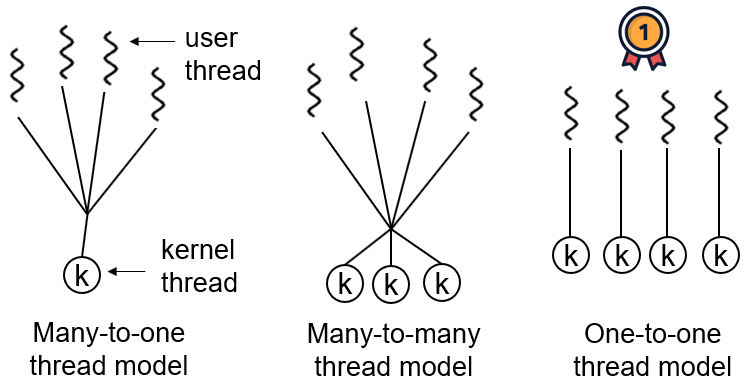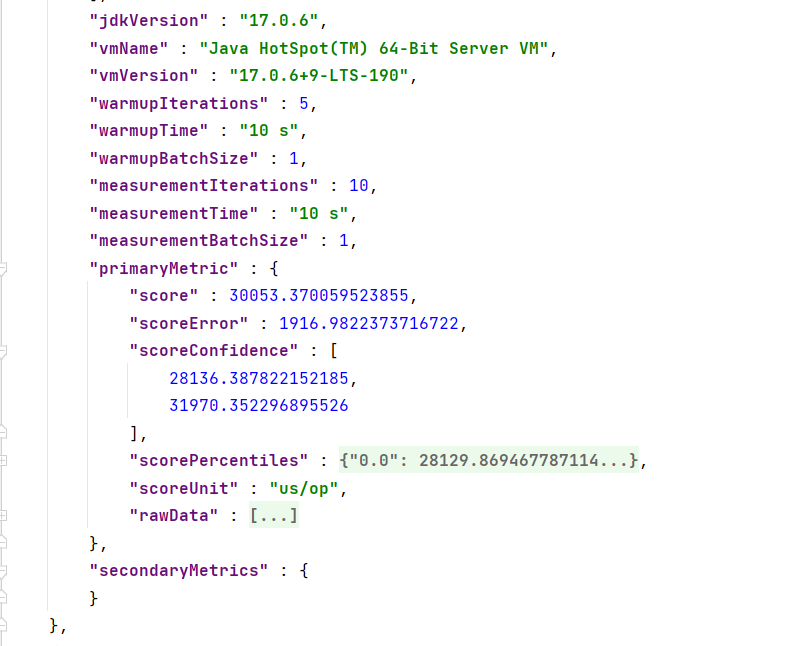26~36
难度中等603
输入两棵二叉树A和B,判断B是不是A的子结构。(约定空树不是任意一个树的子结构)
B是A的子结构, 即 A中有出现和B相同的结构和节点值。
isSubStructure(A, B)
有三种情况
以A为根节点的子树包含B (A, B 子结构部分以A开始 => A是根节点) isSame()方法
B是A的左子树的子结构 重新isSubStructure(A.left,B)
B是A的右子树的子结构 重新isSubStructure(A.right,B)
1 2 3 4 5 6 7 8 9 10 11 12 13 14 15 16 17 18 19 20 21 /** * Definition for a binary tree node. * public class TreeNode { * int val; * TreeNode left; * TreeNode right; * TreeNode(int x) { val = x; } * } */ class Solution { public boolean isSubStructure(TreeNode A, TreeNode B) { return (A != null && B != null) && (isSame(A, B)|| isSubStructure(A.left, B) || isSubStructure(A.right, B)); } public boolean isSame(TreeNode A,TreeNode B) { // 等于也不能返回true , 还有子节点,因此要返回 子判断节点是否相同的表达式 if (B == null) return true; if (A == null||A.val!=B.val) return false; return isSame(A.left,B.left)&&isSame(A.right,B.right); } }
难度简单287
请完成一个函数,输入一个二叉树,该函数输出它的镜像
递归交换每个节点的左右孩子即可
递归停止条件为: 当传入的节点是叶子结点, return
1 2 3 4 5 6 7 8 9 10 11 12 13 14 15 16 17 18 19 20 21 22 23 /** * Definition for a binary tree node. * public class TreeNode { * int val; * TreeNode left; * TreeNode right; * TreeNode(int x) { val = x; } * } */ class Solution { public TreeNode mirrorTree(TreeNode root) { swapTreeNode(root); return root; } public void swapTreeNode(TreeNode root){ if(root==null) return ; // 传入的节点为null ,说明是叶子结点 ,返回即可 TreeNode temp =root.left; root.left=root.right; root.right=temp; swapTreeNode(root.left); swapTreeNode(root.right); } }
难度简单368
请实现一个函数,用来判断一棵二叉树是不是对称的。如果一棵二叉树和它的镜像一样,那么它是对称的。
按照对称的方式遍历左右子树,比较同时遍历的节点是否一致。
采用递归left.val==right.val 两节点的值相等, 返回true
两节点中有一个节点为null ,返回false
1 2 3 4 5 6 7 8 9 10 11 12 13 14 15 16 17 18 19 20 /** * Definition for a binary tree node. * public class TreeNode { * int val; * TreeNode left; * TreeNode right; * TreeNode(int x) { val = x; } * } */ class Solution { public boolean isSymmetric(TreeNode root) { if(root==null) return true; return f(root.left,root.right); } public boolean symmetric(TreeNode left,TreeNode right){ if(left==null&&right==null) return true; if(left==null||right==null||left.val!=right.val) return false; return f(left.left,right.right) &&f(left.right,right.left); } }
难度简单437
输入一个矩阵,按照从外向里以顺时针的顺序依次打印出每一个数字。
定义 top right bottom left , 循环,遍历即可
每次循环 top ++ bottom-- left ++ right--
截止条件 bottom<top top>bottom left>right right <left
每次走完一行或者一列都判断是否截止,因为随着矩阵的规模不同,最后遍历的一行的方向可以是思聪方向中的任意一个
因此每次添加完一行 or 一列都需要判断矩阵是否已经添加完毕
1 2 3 4 5 6 7 8 9 10 11 12 13 14 15 16 17 18 19 20 21 22 23 24 25 26 27 28 class Solution { public int[] spiralOrder(int[][] matrix) { // 每次循环 top ++ bottom-- l ++ r-- // 截止条件 bottom<top top>bottom if(matrix.length == 0) return new int[0]; int left = 0, right = matrix[0].length - 1, top = 0, bottom = matrix.length - 1, idx= 0; int[] res = new int[(right + 1) * (bottom + 1)]; while(true) { // 每次循环 遍历一圈 // 每次走完一行或者一列都判断是否截止,因为随着矩阵的规模不同,最后遍历的一行的方向可以是思聪方向中的任意一个 for (int i = left; i <=right ; i++) // left to right res[idx++] =matrix[top][i]; if(++top>bottom) break; for (int i = top; i <=bottom ; i++) // top to bottom res[idx++] =matrix[i][right]; if(--right<left) break; for (int i = right; i >=left ; i--) // right to left res[idx++] =matrix[bottom][i]; if(--bottom<top) break; for (int i = bottom ; i >=top ; i--) // bottom to top res[idx++] =matrix[i][left]; if(++left>right) break; } return res; } }
难度简单370
定义栈的数据结构,请在该类型中实现一个能够得到栈的最小元素的 min 函数在该栈中,调用 min、push 及 pop 的时间复杂度都是 O(1)。
java中的list为空(size==0)与list为null的区别
就像 空杯子与 没有杯子的区别
注意LinkedList实现的是Queue接口
使用Stack 类, 添加min max,
1 2 3 4 5 6 7 8 9 10 11 12 13 14 15 16 17 18 19 20 21 22 23 24 25 26 27 28 29 30 31 32 33 34 35 36 37 38 public class MinStack { /** initialize your data structure here. */ Integer min=null; Integer max=null; Stack<Integer> list=new Stack<>(); public MinStack() { } public void push(int x) { if(min==null) min=x; if(max==null) max=x; if(min>x) min=x; if(max<x) max=x; list.add(x); } public void pop() { int x=list.pop(); if(list.size()==0){ min=null; return; } if(x==min){ // 取末尾的元素, 然后遍历list 如果有小于的元素, 再赋值 min=list.get(0); for(Integer a:list){ if(a<=min) min=a; } } } public int top() { return list.get(list.size()-1); } public int min() { return min; } }
难度中等363
输入两个整数序列,第一个序列表示栈的压入顺序,请判断第二个序列是否为该栈的弹出顺序。假设压入栈的所有数字均不相等。例如,序列 {1,2,3,4,5} 是某栈的压栈序列,序列 {4,5,3,2,1} 是该压栈序列对应的一个弹出序列,但 {4,3,5,1,2} 就不可能是该压栈序列的弹出序列。
使用一个stack来通过题目给的序列来模拟出栈和入栈操作,
如果模拟成功, 那么最后这个stack应该是空的 , 返回栈是否为空即可
入栈操作: 按照压栈序列的顺序执行。
出栈操作: 每次入栈后,循环判断 “栈顶元素 == 弹出序列的当前元素” 是否成立
由于题目的元素不重复 , 因此遇到元素相同的情况即可出栈
1 2 3 4 5 6 7 8 9 10 11 12 13 14 15 16 class Solution { public boolean validateStackSequences(int[] pushed, int[] popped) { Stack<Integer> stack=new Stack<>(); int i=0; for (int num:pushed) { stack.push(num); while(stack.size()!=0 && stack.peek()==popped[i]){ // 如果在添加的过程中 , 将要添加的元素== 当前 popped对象下标的元素, 那么就弹出当前 添加的元素, // 如果 popped为true, 那么能 完全弹出, 如果不是出栈的序列, 那么最终stack 内一定会有没有出栈的 元素 i++; stack.pop(); } } return stack.size()==0; } }
难度中等224
从上到下打印出二叉树的每个节点,同一层的节点按照从左到右的顺序打印。
题目要求的二叉树的 从上至下 打印(即按层打印),又称为二叉树的 广度优先搜索 (BFS)。
BFS 通常借助 队列 的先入先出特性来实现。
利用队列的特性 , 将right 的 顺序 排在了 left 的孩子的前面 , 从而实现 从左至右添加
1 2 3 4 5 6 7 8 9 10 11 12 13 14 15 16 17 18 19 20 21 22 23 24 25 26 27 28 29 30 /** * Definition for a binary tree node. * public class TreeNode { * int val; * TreeNode left; * TreeNode right; * TreeNode(int x) { val = x; } * } */ class Solution { public int[] levelOrder(TreeNode root) { if(root==null) return new int[0]; LinkedList<TreeNode> queue=new LinkedList<>(); List<Integer> list=new ArrayList<>(); queue.add(root); while(queue.size()!=0){ TreeNode temp=queue.poll(); list.add(temp.val); if(temp.left!=null) queue.add(temp.left); if(temp.right!=null) queue.add(temp.right); } int []res=new int[list.size()]; for (int i = 0; i < res.length; i++) { res[i]=list.get(i); } return res; } }
难度简单241
从上到下按层打印二叉树,同一层的节点按从左到右的顺序打印,每一层打印到一行。
这个题的关键点是在上一题的基础上 , 在while循环内 一次就清空上一次 添加的 节点, 然后再让这些节点的子节点入队
1 2 3 4 5 6 7 8 9 10 11 12 13 14 15 16 17 18 19 20 21 22 23 24 25 26 27 28 29 30 31 32 /** * Definition for a binary tree node. * public class TreeNode { * int val; * TreeNode left; * TreeNode right; * TreeNode(int x) { val = x; } * } */ class Solution { public List<List<Integer>> levelOrder(TreeNode root) { if(root==null) return new ArrayList<>(); List<List<Integer>> res=new ArrayList<>(); Queue<TreeNode> queue=new LinkedList<>(); queue.add(root); while(queue.size()!=0){ List<Integer> list=new ArrayList<>(); for (int i = queue.size(); i >0 ; i--) { // 通过使用循环 ,每次都清空上一次while循环入队的节点. 同时也会添加这些节点的孩子 TreeNode temp = queue.poll(); list.add(temp.val); // 添加左右节点 if(temp.left!=null) queue.add(temp.left); if(temp.right!=null) queue.add(temp.right); } res.add(list); } return res; } }
难度中等241
请实现一个函数按照之字形顺序打印二叉树,即第一行按照从左到右的顺序打印,第二层按照从右到左的顺序打印,第三行再按照从左到右的顺序打印,其他行以此类推。
1 2 3 4 5 3 / \ 9 20 / \ / \ 4 6 12 8
就是按照蛇形打印二叉树
不同于原本的使用的队列, 这里使用的是stack
使用stack先进后出的特性,
如果这一行的顺序是从左到右(以第1行为例) , 由于下一行输出的时候应该是先添加 20 的val ,然后再添加 9.val 因此要把20 放在栈顶, 所以在添加的时候从左到右 应该先添加 left 再添加right
对于从右到左, 以第2行为例, 那么第三行的顺序就该是从左到右 , 会先添加4.val 所以要最后添加 4 节点 , 因此 所以在添加的时候从右到左 应该先添加 right 再添加left
1 2 3 4 5 6 7 8 9 10 11 12 13 14 15 16 17 18 19 20 21 22 23 24 25 26 27 28 29 30 31 32 33 34 35 36 37 38 39 40 41 42 43 44 45 46 47 48 /** * Definition for a binary tree node. * public class TreeNode { * int val; * TreeNode left; * TreeNode right; * TreeNode(int x) { val = x; } * } */ class Solution { public List<List<Integer>> levelOrder(TreeNode root) { if(root==null) return new ArrayList<>(); List<List<Integer>> res=new ArrayList<>(); Stack<TreeNode> stack=new Stack<>(); stack.add(root); int cnt=0; while(stack.size()!=0){ List<Integer> list=new ArrayList<>(); List<TreeNode> treeNodeList=new ArrayList<>(); while(stack.size()!=0){ // 将上一轮循环存入的节点 都出栈 ,treeNodeList treeNodeList.add(stack.pop()); } if(cnt==0){ //从左往右 for (TreeNode temp: treeNodeList) { list.add(temp.val); if(temp.left!=null) stack.add(temp.left); if(temp.right!=null) stack.add(temp.right); } cnt++; }else{ // 从右往左 for (TreeNode temp: treeNodeList) { list.add(temp.val); if(temp.right!=null) stack.add(temp.right); if(temp.left!=null) stack.add(temp.left); } cnt--; } res.add(list); } return res; } }
难度中等573
输入一个整数数组,判断该数组是不是某二叉搜索树的后序遍历结果。如果是则返回 true,否则返回 false。假设输入的数组的任意两个数字都互不相同。
后序遍历 :
二叉搜索树:
左子树中所有节点的值< 根节点的值;右子树中所有节点的值 > 根节点的值;
其左、右子树也分别为二叉搜索树。
通过递归,判断所有子树的 正确性 (即其后序遍历是否满足二叉搜索树的定义) ,若所有子树都正确,则此序列为二叉搜索树的后序遍历。
postorder[i] ~ postorder[j] 表示的是当前树的区间
k=0 , 由于本题是后序遍历, 0~i 的所有端点都会满足 <postorder[j], 因此即使是写成了k=0, 也不会错,不过会导致循环的次数多,耗费时间
1 2 3 4 5 6 7 8 9 10 11 12 13 14 15 16 17 18 19 class Solution { public boolean verifyPostorder(int[] postorder) { return isRight(postorder, 0,postorder.length-1); } public boolean isRight(int []postorder,int i,int j){ //i, j 表示这个树的 左右端点 if(i>j) return true; // 说明这个位置没有节点 ,直接返回true int k=i; // 直接从当前树的最左端的端点开始 // k=0 , 由于本题是后序遍历, 0~i 的所有端点都会满足 <postorder[j], 因此即使是写成了k=0, 也不会错,不过会导致循环的次数多,耗费时间 while(postorder[k]<postorder[j]){ k++; } int r=k; //这个是右子树的开始的位置 while(postorder[k]>postorder[j]) { k++; } return k==j&&isRight(postorder,i,r-1)&&isRight(postorder,r,j-1); //左右子树的后续遍历不能取到 端点,所以需要 -1 } }
一篇文章解决所有二叉树路径问题(问题分析+分类模板+题目剖析) - 求和路径 - 力扣(LeetCode)
难度中等361
给你二叉树的根节点 root 和一个整数目标和 targetSum ,找出所有 从根节点到叶子节点 路径总和等于给定目标和的路径。
叶子节点 是指没有子节点的节点。
1 2 3 4 5 6 7 8 9 10 11 12 13 14 15 16 17 18 class Solution { LinkedList<List<Integer>> res = new LinkedList<>(); LinkedList<Integer> path = new LinkedList<>(); public List<List<Integer>> pathSum(TreeNode root, int sum) { recur(root, sum); return res; } void recur(TreeNode root, int tar) { if(root == null) return; path.add(root.val); tar -= root.val; if(tar == 0 && root.left == null && root.right == null) res.add(new LinkedList(path)); recur(root.left, tar); recur(root.right, tar); path.removeLast(); } }
难度简单967
给你二叉树的根节点 root 和一个表示目标和的整数 targetSum 。判断该树中是否存在 根节点到叶子节点 的路径,这条路径上所有节点值相加等于目标和 targetSum 。如果存在,返回 true ;否则,返回 false 。
叶子节点 是指没有子节点的节点。
1 2 3 4 5 6 7 8 9 10 11 12 13 14 15 16 17 18 class Solution { int ans=0; public boolean hasPathSum(TreeNode root, int sum) { if(root==null) return false; dfs(root,sum); return ans!=0; } public void dfs(TreeNode root, int target){ if(root==null) return ; if(root.val==target&&root.left==null&root.right==null){ // 验证是否是叶子结点, 直接 root.left==null&root.right==null ans++; return ; } dfs(root.left,target-root.val); dfs(root.right,target-root.val); } }
难度中等570
请实现 copyRandomList 函数,复制一个复杂链表。在复杂链表中,每个节点除了有一个 next 指针指向下一个节点,还有一个 random 指针指向链表中的任意节点或者 null。
利用hashmap , key value 的类型均是 Node , 使用两次循环, 第一次先将 Node 以 new 的形式存储到map 里面
第二次循环 : 通过hashmap的特性, 将 random以及next 依次赋值 ,
最终返回 map.get(head);
1 2 3 4 5 6 7 8 9 10 11 12 13 14 15 16 17 18 19 20 21 22 23 24 25 26 27 28 29 30 31 32 /* // Definition for a Node. class Node { int val; Node next; Node random; public Node(int val) { this.val = val; this.next = null; this.random = null; } } */ class Solution { public Node copyRandomList(Node head) { Node now=head; Map<Node,Node> map=new HashMap<>(); Node pre=null; while(now!=null){ // 先把链表复制到 map里面 , 建立 “原节点 -> 新节点” 的 Map 映射 map.put(now,new Node(now.val)); now=now.next; } now=head; while(now!=null){ map.get(now).random=map.get(now.random); map.get(now).next=map.get(now.next); now=now.next; } return map.get(head); } }
难度中等552
输入一棵二叉搜索树,将该二叉搜索树转换成一个排序的循环双向链表。要求不能创建任何新的节点,只能调整树中节点指针的指向。
使用中序遍历(左根右), 从大到小访问所有节点
并在访问每个节点时构建 cur 和前驱节点 pre 的引用指向;
cur表示当前的节点
pre表示当前节点的前面的那个节点
中序遍历结束后, 最后的now刚好是 5 , 由于pre=now, 此时的pre也是指向这个节点, 也就是尾结点
遍历完成返回treeToDoublyList后,最后构建头节点和尾节点的引用指向即可。
1 2 3 4 5 6 7 8 9 10 11 12 13 14 15 16 17 18 19 20 21 22 23 24 25 26 27 28 29 30 31 32 33 34 35 36 37 38 39 40 41 /* // Definition for a Node. class Node { public int val; public Node left; public Node right; public Node() {} public Node(int _val) { val = _val; } public Node(int _val,Node _left,Node _right) { val = _val; left = _left; right = _right; } }; */ class Solution { Node pre=null,head=null; // 分别代表 当前节点的前面的那个节点 以及头结点 , 遍历结束后, pre 的指向是尾结点 public Node treeToDoublyList(Node root) { if(root==null) return null; dfs(root); // 中序遍历构造链表 // 链接首尾节点 pre.right=head; head.left=pre; return head; } void dfs(Node now){ // 中序遍历 if(now==null) return ; dfs(now.left); if(pre==null) head=now; // pre为空 ,说明当前的节点为头结点 else pre.right=now; now.left=pre; pre=now;// 当前节点右移 dfs(now.right); } }
 image-20220801202035503
image-20220801202035503 image-20220801203954127
image-20220801203954127 Picture1.png
Picture1.png image-20220801212936835
image-20220801212936835 image-20220803144136843
image-20220803144136843 image-20220803155254603
image-20220803155254603 image-20220804150901036
image-20220804150901036 image-20220804150929209
image-20220804150929209









